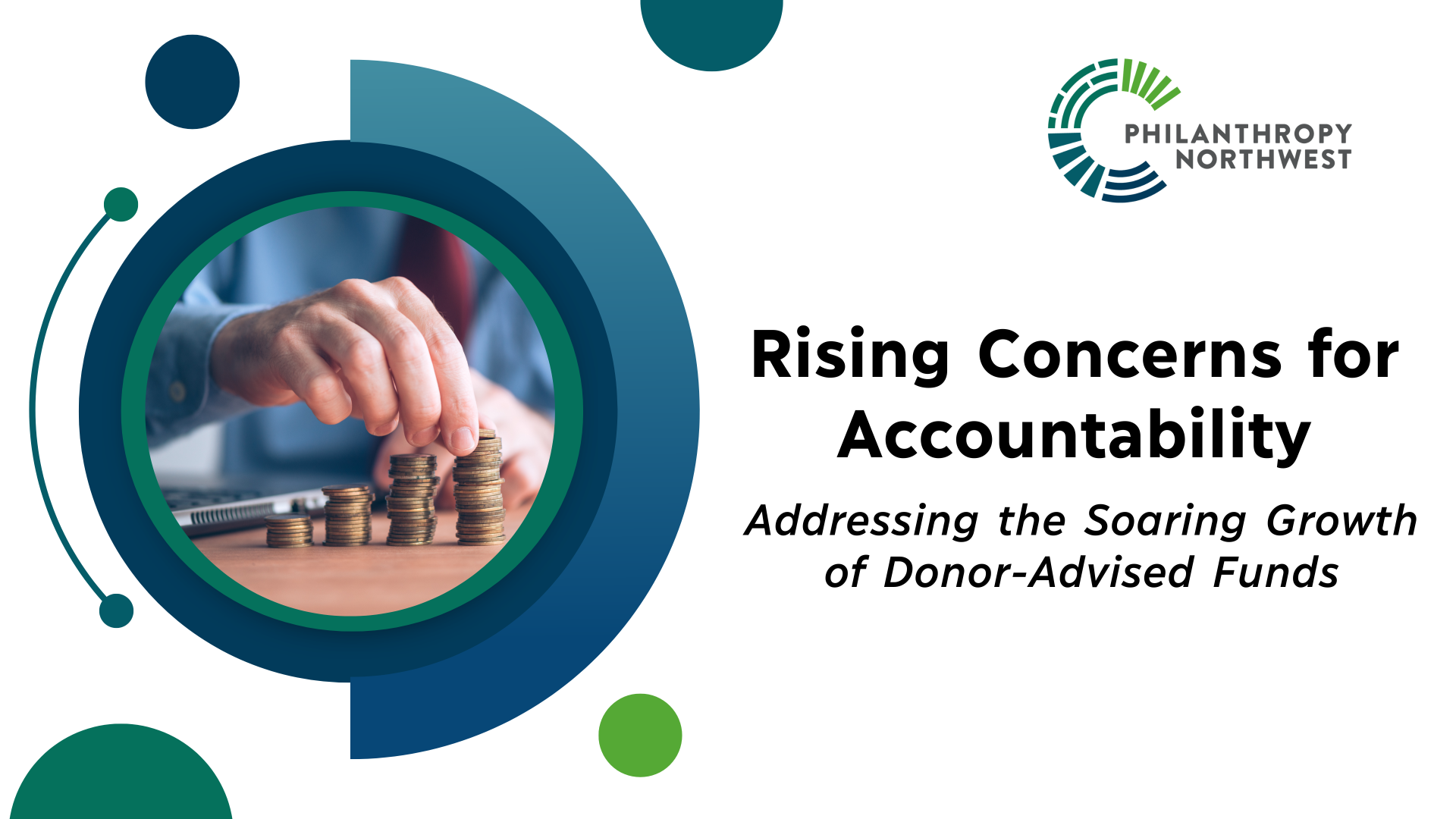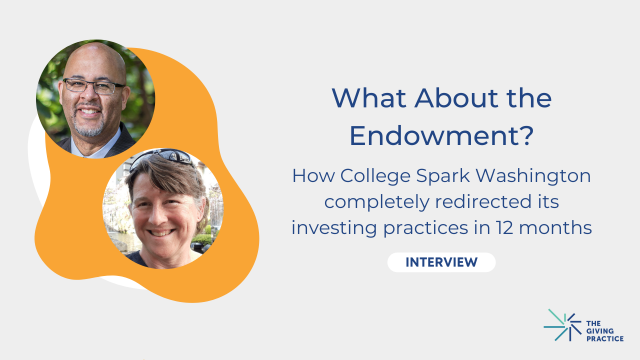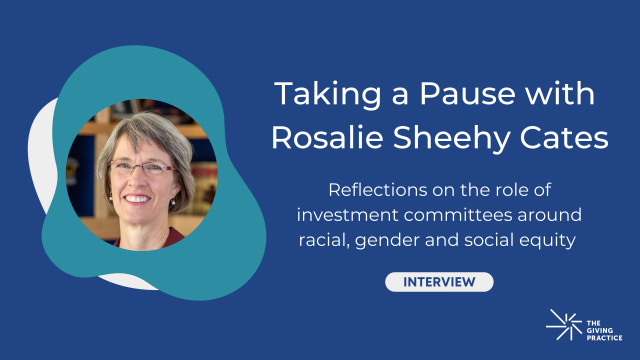
Donor-advised funds (DAFs) are growing substantially as a tool for philanthropy. The Institute for Policy Studies reports that 4% of individual giving went into DAFs in 2007 and by 2021 it reached 22%, with DAFs holding $234 billion and growing faster than private foundations.
Many Philanthropy Northwest members manage or use DAFs. But as DAFs’ relevance increases, so do questions about their accountability to communities. Philanthropy Northwest has spent significant time assessing DAFs’ impact and potential needs around oversight and transparency. Here, we briefly summarize the research and our emerging public policy position on DAFs.
What are DAFs?
DAFs are a type of individual giving account managed at public charities. Their ease of use – and industry marketing – has made them popular among wealthy donors. People can open an account and put in tax-deductible charitable donations whenever they want. The funds are invested, and donors can give out portions to nonprofits at any time.
The organizations managing DAF accounts – DAF sponsors – own the funds and can spend them for any charitable purposes, but in practice they let donors decide when and where the money goes, treating DAFs like donors’ mini-foundations. The National Philanthropic Trust, a sponsor that also tracks industry trends, finds that almost two-thirds of DAF assets are held by commercial sponsors (national organizations that are sometimes the nonprofit arms of banks) while community foundations and a small fraction of other funders hold the rest.
The Importance of Addressing DAF Payout Problems
DAFs highlight a shift in how wealthy donors give and a greater dependence on their donations as wealth inequality worsens in the United States. Analyses out of Boston College and the Institute for Policy Studies find that in the 1990s, over 90% of individual giving went directly to nonprofits, but now over a third of giving goes into foundations and DAFs – tools favored by the wealthy.
However, DAFs’ skyrocketing growth has not meant more giving overall. According to Giving USA, the average person normally donates around 2% of their income but this dropped to 1.7% in 2022, its lowest level in decades. Surveys aggregated by Indiana University note a decline among low- and middle-income donors especially.
Unfortunately, DAFs are not designed to make up for a stagnation in giving. Donors receive upfront tax incentives with no payout requirement or incentive once donations sit in accounts. A National Bureau of Economic Research paper finds that the average DAF pays out around 15% of its assets per year, while on the low end, a fourth of DAF sponsors pay out below 5%. Other reports from the Council of Michigan Foundations and DAF Research Collaborative find that numerous individual DAF accounts give away nothing.
Sponsors also collect fees based on a percentage of funds held in their DAFs, so they make more money when DAFs give less. A survey of sponsors, led by the DAF Research Collaborative, finds that the typical sponsor only requires DAFs to make one small grant every four to five years, whereas others do not at all.
DAF Transparency is Another Concern
Even when DAFs do pay out, not all grants are “charitable.” Many do go to good causes and sponsors can be effective partners to both donors and communities. However, reports from the Chronicle of Philanthropy, Council of American-Islamic Relations, Southern Poverty Law Center and others find that DAFs provide many millions of dollars each year for hate groups. Other controversial gray areas can also receive DAF funding.
And some DAF grants do not leave philanthropy at all. Varied estimates from the California Attorney General, Giving USA and Institute for Policy Studies note that up to 11% of the DAF sector’s payout may be just transfers from one DAF to another. The Chronicle of Philanthropy and Institute for Policy Studies also find that a small percentage of private foundation funding flows into DAFs too, which lets foundations avoid payout and disclosure rules.
The payout and transparency problems above are nationwide and permeate across the Pacific Northwest’s DAF market. Despite these issues, DAF research can be scarce, often relying on reports curated by the DAF industry and remaining relatively obscure to nonprofits and the public.
Our Push for Accountability
Surveys from the Center for Effective Philanthropy, Indiana University and the Institute for Policy Studies find that many nonprofits and people who are aware of DAFs would like to see increased accountability. Some advocates, like the Initiative to Accelerate Charitable Giving members, are pushing for legislation to increase industry oversight.
Philanthropy Northwest supports increased transparency and payout regulation on DAFs to ensure that philanthropy is more accountable to communities. We also encourage research and education to help our sector implement best practices. Years of conversations and programs with funders, nonprofits and community leaders continue to refine this approach.
For more information on Philanthropy Northwest's policy position and advocacy on donor-advised funds, please see our policy page. You can also contact our policy team.


